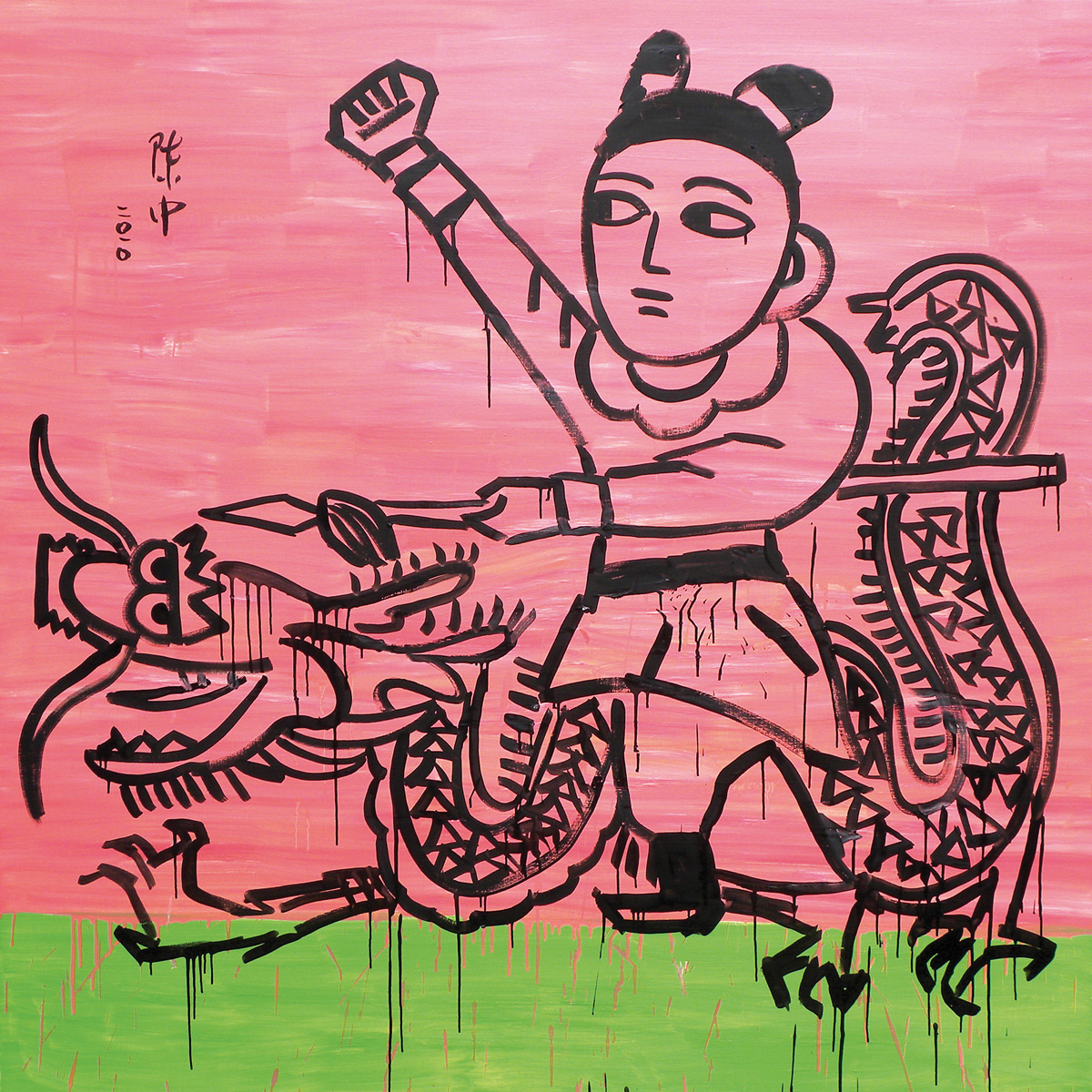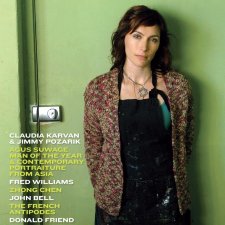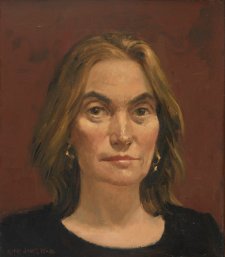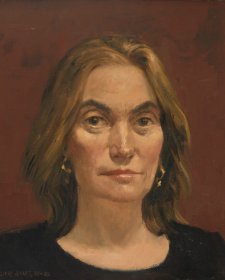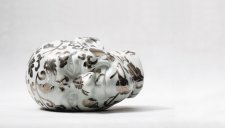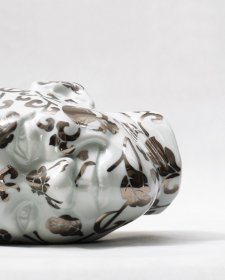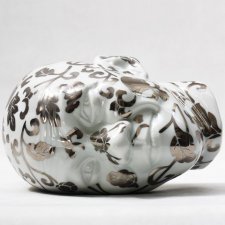Animals and mythical creatures also appear, some closely resembling our dog, Tudo. To me all these faces and figures represent the importance of family connections and exploring crosscultural issues with the influences of travel and an interest in auspicious imagery.
The cartoon heroine Li Ji: Warrior girl (adapted from a forth-century fable) who appeared in animated video works and prints of 2000–02 and later paintings, has been a significant figure recognised as a kind of avatar expressing issues of concern. On her journey to visit Melbourne’s Chinatown, Li Ji contemplated aspects of migration, racial discrimination and a sense of belonging, while experiencing flashbacks to a past life in ancient China. Other fictional or ‘imagined’ female portraits have been inspired by travels to Amsterdam, New York and Rio de Janeiro. These figures represent and embrace being transcultural with their mixed appearances and positions as global citizens.
In 2002, I depicted Mike as the Door God in a version of the armour-clad guardian figures painted at the entrance to the Chan ancestral temple (Chan is my maternal family name). I was interested in the idea of these fierce dark-complexioned figures as positive images. Rali has featured in portraits at various ages, including Lucky fish boy 2002 as a chubby toddler in a work that blends traditional Chinese print imagery with contemporary styling and his distinctive afro. His heritage – Chinese, Welsh, African-American, Native American Pima, Mexican, Jamaican and Irish – reflects the multicultural Australian child. In Self portrait with guardian spirits 2010 my figure sits in half lotus position surrounded by a large swirling gold-scaled dragon and two green ‘lion-dog’ companions that bear some resemblance to our crazy Staffy cross, Tudo. In other works he also appears as guardian creature sporting multi-coloured wings. Painting shirt (Self Portrait) focuses on my favourite art-making shirt. A gift from my parents, the image is Frida Kahlo’s 1939 double self portrait The two Fridas. Now covered in psychedelic paint marks from a brush-wiping habit, I associate this shirt with being in the studio and creative zone. The two Fridas peer out: one in Victorian era dress; one in Mexican Tehuana dress, representing in part Kahlo's mixed heritage.
I am struck with how some of the faces in my work have transformed over the years. From sword wielding Li Ji with her severe frown, trying to reconcile the past with contemporary urban life (she did have to battle a giant python to save her village), to the more serene hybrid guardian goddesses, to the recent self portrait with the ‘up late in the studio’ face and weary eyes. Serious but not looking quite so irritated, the recent figures look for some kind of balance between art and family life; creative expression and dealing with the world. The spirit of Li Ji lives on, but she’s older and calmer, aspiring to assert positive energy with her transcultural vibes.
